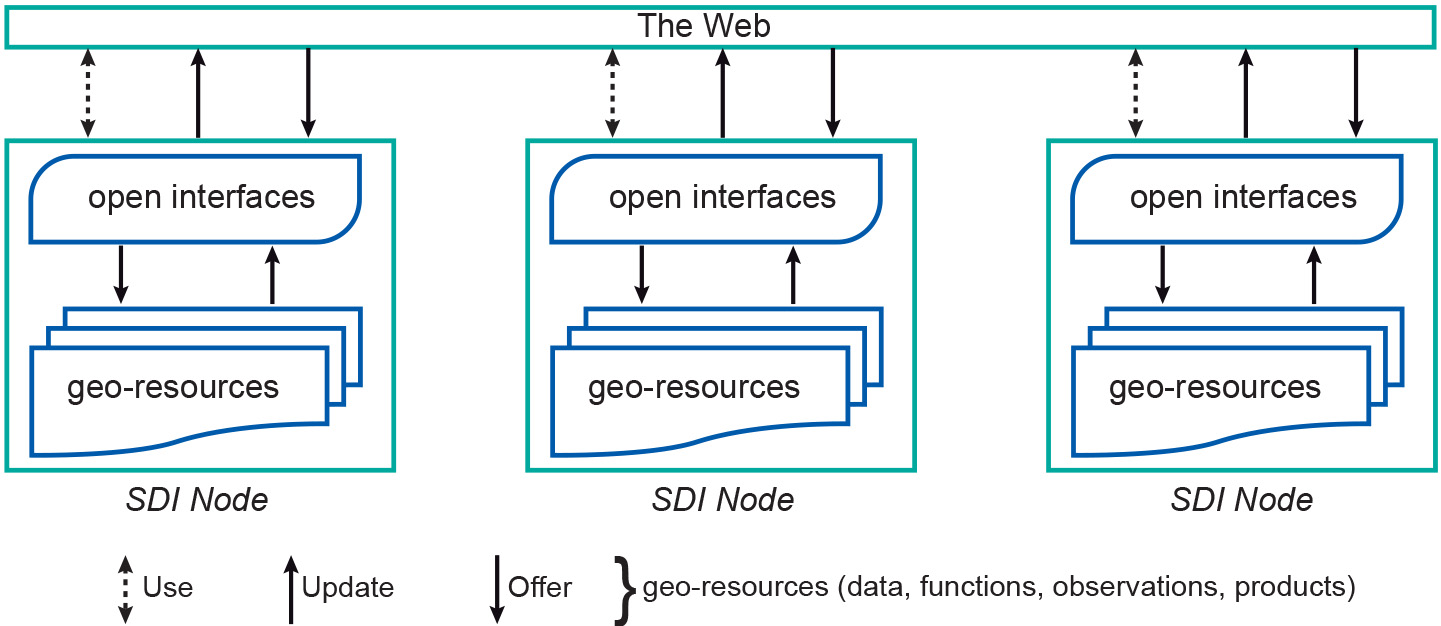SDI nodes
Introduction
From an architectural point of view, an SDI is a collaborative network of disparate systems called SDI nodes. An SDI node is a moderately to highly complex information system, usually of long life expectancy, in which geo-resources feature rather prominently. SDI nodes are totally independent systems, which means that t they also have to fulfill requirements that are different from those of the SDI itself.
Explanation
We can argue that we have an SDI in place when we have SDI nodes that host georesources that can be found, used and maintained, or even created, by other SDI nodes. Figure 1 depicts an schematic view on the components of such an SDI. For the design of an SDI that fulfills the criteria mentioned above, three perspectives need to be addressed. First, the vertical perspective that focuses on the design of SDI nodes as state-and-function systems that hold data and provide functions in the form of services for operating on that data. S
econd, the horizontal perspective that focuses on how to specify the communication patterns between SDI nodes, abstractly constructing a larger system, i.e. the SDI. And third, the introspective perspective that focuses on augmenting the specified SDI system with the means to query itself for service possibilities and to allow the dynamic creation of new services.

Learning outcomes
-
19 - SDI Environment
Describe and apply the basic processes, processing, analysis and conversion in an SDI environment while combining multiple data sets from various remote sensing and other sources and explain challenges in data integration. Describe and use various methods of change detection. (Max. level 3)
Prior knowledge
Outgoing relations
- SDI nodes is part of Spatial Data Infrastructure (SDI)
Incoming relations
- Geo-webservice is part of SDI nodes